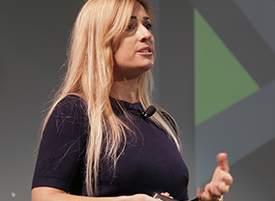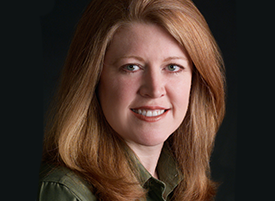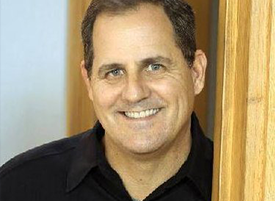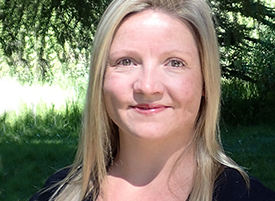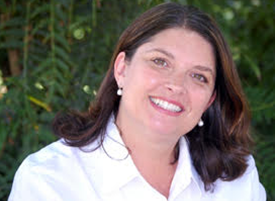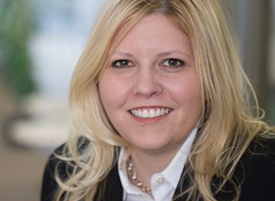B2B marketers set their sights on data-driven marketing, predictive analytics and account-based marketing in 2015, and they will undoubtedly continue to focus on these critical strategies in the coming year.
The thought leaders we queried for Demand Gen Report’s 2016 Marketing Automation Outlook Guide also pointed to a number of new themes they expect to emerge in 2016, including the increased importance of orchestrating a content experience across multiple channels. As B2B buyers are widening their net when doing research — often turning to peer review sites and social media as they investigate new solutions — our panel of industry experts noted that B2B marketers will pay closer attention to these channels.
The multichannel trend dovetails with another trend taking shape among our thought leaders: buyer-centric marketing. As they interact with buyers in new ways, progressive B2B marketers will be using the intelligence that they gather to create a more personalized approach that mirrors the B2C buying experience.
Predictive analytics will continue as a hot trend, but marketers will become more granular in their approach, according to our panel of experts. They will explore the use of predictive in more specific areas, such as improving their lead nurturing campaigns.
While email has long been the favorite channel of B2B marketers, 2016 will see a move toward more interactive and visual content, according to our prognosticators. Video and audio were mentioned by a number of our panelists as being more widely adopted in 2016. And there was at least one prediction that direct mail will make a comeback, as B2B markets look to stand out in a sea of email promotion.
Whatever new technologies and tactics emerge in 2016, observers noted that seamless integration will be the key to adoption. With the shift toward a multichannel buying experience, sharing buyer behavior data across various platforms is key. In addition, as marketers look to centralize data and track metrics to prove marketing’s value, the need for various applications to interact smoothly with one another is essential to success.
We hope you find these observations thought-provoking, and we look forward to covering the changing B2B marketing landscape in the year ahead.
Technology Providers
What demand generation tactics had the greatest impact in 2015?
Customers continue to have success when they are able to execute unified campaigns across multiple channels. Having a targeted message across engagement channels clearly increases conversions for our customers because their customers feel as though they’re being handled with greater consistency.
Marketers who have been able to leverage data from disparate data sources for more precise targeting, such as purchase and service data, are showing measurably higher conversion rates.
What have been the biggest challenges for B2B marketers in 2015?
The explosion of marketing technology is both a blessing and a burden. On one hand, there’s ongoing innovation. On the other, if one application or data source doesn’t talk to the other, it can create a broken customer experience.
The second issue is around connecting the right data. Marketers continue to struggle with data. The amount of data they have access to is overwhelming and is growing at an accelerating rate.
The third is around adapting to prospect and customer behavior as they move across devices and channels.
What do you see as the biggest trends in marketing automation for 2016?
Marketers are starting to get clarity not by just unifying any data source that comes their way, but instead focusing on the relevant data that matters. As they pull that data in, they can adapt to prospect behaviors and nurture the prospect through a better experience.
We’re also seeing a lot of traction around account-based marketing (ABM). B2B organizations are often tasked with selling to a group of individuals who all exist within a company.
Because there are so many technologies now saturating the marketing landscape, a focus on open platforms is critical. While marketers don’t need to be technologists, they’re asking more questions about what will be the impact of a technology.
What new opportunities do you see for demand gen in 2016?
There will be an increase in cross-channel expansion, especially with pulling together paid, owned and earned media. As marketers are able to unify behaviors and data, they have the ability to execute more sophisticated cross-channel campaigns.
As marketers adopt open frameworks, their ability to automate more sophisticated campaigns is increased and gets them to think beyond the transaction. What this really means is a greater focus on behavior data.
FUN FACT
On one business trip last year, I circumnavigated the globe by air. I’m from New England, so I’m a diehard fan of the Red Sox, Patriots, Bruins and Celtics.
What demand generation tactics had the greatest impact in 2015?
In general, marketers are realizing the importance of having a dialog with their buyers versus a canned, one-way talk track. I saw our customers have real impact when they leveraged marketing automation and married that with personalization capabilities.
What were the biggest challenges for B2B marketers in 2015?
One of the most significant and serious challenges is still having a process and tools to effectively measure the impact of marketing investments. The majority of marketers know how important this is, but doing it can still be tough.
Marketers all understand the value of segmenting their database, but in many cases we still see one broad message on the website. Additionally, marketers are being inundated by so many new technologies and understanding what you need to pay attention to can be tricky.
That also has made how you structure your team an interesting challenge. There are now content teams, marketing operations and digital marketing teams (that all need to effectively communicate and market) — so how to structure your marketing organization has been something that many folks are trying to figure out.
Lastly, I really believe data is a tough one. With digital marketing continuing to grow in importance and approaches such as account-based marketing, data has only become more valuable and critical to have right.
What do you see as the biggest trends in marketing automation for 2016?
Some of the big trends coming up and developing further include:
Personalization. The ability to be personal and relevant matters, and this will continue to grow in importance.
Effective cross-channel marketing. There is a need for marketers to effectively market in a meaningful and consistent way across multiple channels.
More “if-then” marketing. The future is around having a conversation with your buyer and sending them the right message at the right time. This will be supported by predictive technologies and a greater investment in data analytics.
What new opportunities do you see for demand gen in 2016?
The opportunities for demand generation are really around engaging the buyer in a hyper-compelling way. This will involve using channels like mobile effectively, it will mean a big emphasis on knowing the customer — so messaging and content do not fall flat — and it means using approaches such as account-based marketing.
FUN FACT
Prior to being a marketer, I worked in molecular biology research.
What were the biggest challenges for B2B marketers in 2015?
In our 2015 State of B2B Marketing Automation report, we found that three of the biggest challenges of 2015 for B2B marketers were new business development, quality of leads, and demand and lead generation.
Over the course of the past few years, the B2B sales cycle has changed dramatically. A recent IDC study that we funded found that 65% of buyers engage with a salesperson only after they've made a purchase decision. Most marketers and sales teams don’t have the visibility or context needed to take advantage of those opportunities and lead a prospect through the buying process.
What do you see as the biggest trends in marketing automation for 2016?
One of the biggest trends in marketing automation today — and in marketing overall — is the move toward greater personalization. Customers expect the organizations they buy from to cater to their individual needs, tastes and preferences. In 2016, marketing automation will move even further towards helping marketers collect and act upon data about their prospects.
Marketing automation will also see increased innovation on mobile devices in 2016.
What new opportunities do you see for demand gen in 2016?
With all of the information sources available to prospects today, B2B marketers have an unprecedented opportunity to engage potential buyers on a variety of channels.
In 2016, B2B marketers will have an even bigger opportunity to incorporate new mediums into their demand gen repertoire. For example, video content can quickly communicate the essential details of a product or service, and “hook” audiences much more quickly than static content can in many cases.
Another area of opportunity is social media. It’s no longer the outlier it once was, and B2B marketers are beginning to support it as a viable channel.
The bottom line is, no matter what medium is used, the key to greater engagement is personalization and understanding what type of demand gen path will capture which buyers’ attention.
FUN FACT
Before co-founding Pardot, I practiced Judo competitively for 20 years, four of which were spent in Japan, where Judo is the national sport.
What demand generation tactics had the greatest impact in 2015?
Paid and organic social ads. We see more of our customers adding social media to their marketing mix, as social media proves itself as a viable channel to drive leads.
Third-party customer review programs. As buyers turn to online reviews to learn and discover, the voice of the customer becomes even more powerful. Buyers trust the experiences of other users like them to help influence their purchasing decisions.
What were the biggest challenges for B2B marketers in 2015?
Data and intelligence were the biggest challenges of the past year, as marketers struggled with how to turn marketing engagement data into actionable signals. Marketers are always trying to address the question of what happened today and make sense of the engagement data they collect from campaigns.
What do you see as the biggest trends in marketing automation for 2016?
Post-sales is the new sales as more and more revenue moves to the renewal ledger in the subscription economy. As a result, marketers need to be lifecycle-oriented and look to automate their customer engagement strategy.
Marketing automation use will expand from predominantly acquisition marketing to retention, expansion and advocacy. We also will see the role of CRM and the marketer evolve into the new stewards of the customer relationship.
CRM and marketing automation will become prescriptive as predictive attributes and buying signals are used to optimize the sales cycle.
What new opportunities do you see for demand gen in 2016?
In 2016, we believe the same principles and practices applied to demand gen marketing —segmenting, scoring and nurturing — will be applied to customer marketing, as the subscription economy renews focus on post-sales initiatives. Revenues are already moving steadily toward the renewal ledger, and it’s high time businesses adjust accordingly. Marketers must commit their marketing resources to retention, expansion and advocacy initiatives, and embracing marketing’s role in stewarding the customer relationship.
FUN FACT
I started a DJ business in the 7th grade that my cousin and I ran for about five years.
What demand generation tactics had the greatest impact in 2015?
B2B marketers have embraced content creation and content marketing to effectively generate demand at the top of the funnel, as well as act as the currency for nurturing customers who are not yet ready to buy.
What were the biggest challenges for B2B marketers in 2015?
Executive awareness of what is possible still remains the largest impediment to marketers making substantial progress. Until the executive team understands the concepts of collecting and using marketing data to deliver hyper-relevant targeted campaigns and grasps how important their digital assets (including people, data and technology) are, their company’s marketing effectiveness will trail behind other digital pacesetters.
When I see the lightbulbs go off for executives, massive momentum can happen: resources get assigned, skill investments are made, and digital marketing comes to the forefront as a strategic weapon to leapfrog the competition.
What do you see as the biggest trends in marketing automation for 2016?
We will see the innovators really embrace analytics and predictive technology to better spot trends, identify bottlenecks and reward top customers. Hiring data scientists or marketing operations staff who understand how to leverage these new technologies will give companies a huge leg up over companies who are doing manual data aggregation and traditional reporting. Done right, bringing these new data-centric approaches into an organization can even change the speed and culture around how businesses absorb change and make decisions.
What new opportunities do you see for demand gen in 2016?
There is a huge opportunity for marketers to move beyond simple drip nurture campaigns. So many marketers are still stuck in the weekly/biweekly/monthly newsletter cycle. Usually this means everyone gets the same message no matter who they are or where they are in their consideration process. Using progressive profiling to understand your customer at every stage and then using that data to tailor offers, message frequency and the content itself should be given strong consideration. Also supporting this more intelligent Nurture 2.0 should be fully integrated data points and processes between not only sales, but also the call centers and support organizations. Marketing should also reach out to the existing customer teams to design great adoption/post-sale campaigns that leverage marketing automation capabilities.
FUN FACT
I’ve spent the past three years learning French and doing English leather working. When I’m not traveling, I love to get in my studio and create leather handbags.
What were the biggest challenges for B2B marketers in 2015?
Having data at our fingertips is a tremendous benefit, but also a huge challenge. The data explosion has left many B2B marketers with the issue of cleaning up “dirty and old” data and the challenge of creating meaningful marketing programs that will translate into sales opportunities.
B2B marketers are also coming to the painful realization that traditional marketing metrics, such as click-through rate and CPM have absolutely no impact on the bottom line. This means that we all had to fundamentally change our way of thinking and start measuring things like pipeline contribution, close rates and funnel velocity.
What do you see as the biggest trends in marketing automation for 2016?
As data continues to become an integral part of B2B marketing strategies, and personalization a requirement, B2B marketers will begin to automate personalization for customers.
We’ll also see an increase in mobile responsiveness for the buyer journey. If your subject line and content is compelling enough, people will engage with your emails — regardless of the timing.
In B2B, the buying cycle is exceptionally long and the average decision-making group includes more than five buyers. While the last piece of marketing content may have led to the conversion, we know that it takes a steady stream of touch points to close a deal. In 2016, expect to see an increase in attribution tracking and modeling, since it will ensure that each of the touch points receives credit.
What new opportunities do you see for demand gen in 2016?
More than 65% of the B2B buying cycle is done anonymously today. This means companies that wait for the “hand raise” before contacting a prospect are missing opportunities and wasting both time and money. In 2016, we’ll see further growth of account-based marketing (ABM), which presents an opportunity for companies to be more proactive in reaching prospects.
Furthermore, ABM helps demand gen teams align the journey to the buyer’s needs, rather than trying to fit their needs into a broad, impersonal plan.
Due to recent development in marketing technology, demand gen teams will also have the ability to create clearer attribution and revenue correlations next year. This will help them determine where money is being wasted and readjust accordingly.
FUN FACT
I spent my college years in Boulder, Colo., where I became an avid powder skier.
What demand generation tactics had the greatest impact in 2015?
When it comes to inbound marketing, blogging remains at the center of a strong inbound demand strategy. Blogging is the fuel that drives the entire inbound demand process. It brings in new visitors from search engines, social media and other sites, while providing prospects the education they need to make informed buying decisions.
What were the biggest challenges for B2B marketers in 2015?
There have been a few big challenges for B2B marketers in 2015, but one of the largest issues facing marketers this year was the difficulty of proving ROI for their marketing efforts. Many traditional marketing techniques are really hard to track and analyze, so it’s almost impossible to prove a return on them. With inbound marketing methods, people are able to track the exact results of each tweet, or email, or offer.
What do you see as the biggest trends in marketing automation for 2016?
Customers are getting pickier and pickier in their interactions with companies, and I think marketing automation will need to address that in 2016. In the coming year, marketing platforms will need to ensure that relationships with individual contacts are easy to see and understand, making it easier for marketers to deliver a seamless and personalized experience.
As always, marketers will need to continue collecting data to find and optimize their methods to their audience. The challenge of proving ROI is one that marketers will have to continue working on in the next year. It requires a shift in focus to consolidating data and proving value, and that can be tough — especially if marketers don’t have all the information in one tool.
What new opportunities do you see for demand gen in 2016?
We are in the very early stages of some major shifts in demand generation. While content will remain key to online demand generation, content will continue to further diversify from text with a greater focus on audio, video and images. Video continues to be an interesting demand gen channel. With content diversity, we are seeing a shift in distribution strategies with networks like Medium offering companies instant distribution for their content.
FUN FACT
I’ve never had a cup of coffee in my life and I don’t drink caffeine. But my caffeine-free lifestyle is being challenged with an infant in the house.
What demand generation tactics had the greatest impact in 2015?
We’ve seen the buzz of “trends” like social networking and others promise too optimistically, or require more effort than they are worth, and we’ve seen the disappointment when the hangover comes.
Email continues to work effectively for outbound marketing, far more effectively than anything other than one-on-one conversation. Marketing automation, coupled with a well thought-out content curation program, has proven effective in B2B across industry segments.
What were the biggest challenges for B2B marketers in 2015?
Aligning the goals and efforts of sales and marketing remains a challenge for many organizations, despite the availability of data to map the full extent of the buyer’s journey. Marketing has to remain focused on all aspects of the funnel in order to sustain success, while sales can often focus just at the end stages. It’s critical that both sales and marketing understand the full dimensions of the funnel and agree that all should be appropriately funded.
What do you see as the biggest trends in marketing automation for 2016?
In 2016, we will see a renewed emphasis on the basics of marketing. That doesn’t mean that technology has a lesser place; in fact, it probably screams for more. But the constant chase for the latest marketing trend or technology has taken focus off of the conversation with the buyer. Marketers have to get the context of the conversation just as right as the content. We’ll need an even greater understanding of the mass of data that marketers have and the need for even greater automation to respond properly.
What new opportunities do you see for demand gen in 2016?
Buyers tune out messages that don’t inspire them, and they tune out over-hyped and nonsensical benefit claims even more quickly. Connecting potential buyers to credible stories of other similar marketers so they can understand their experiences is a powerful tool for building demand.
FUN FACT
I like to ride mountain bikes uphill, just for the thrill of coming down at ridiculously high rates of speed. The hills around Silicon Valley and the mountains near Lake Tahoe have some of the most strenuous and stunning rides around.
What demand generation tactics had the greatest impact in 2015?
We’ve seen many of our customers have great success with the launch of multichannel campaigns and tracking all the tactics in one place. From a B2B perspective, it is important to be present where your customers already are, more so than attempting to drive them to somewhere they’re not. Multichannel campaigns help companies to be relevant in all the places a customer wants or expects to find them. Social is continuing to grow as a significant piece of the multichannel campaign, especially now that there are tools available to track social conversions and ROI.
What were the biggest challenges for B2B marketers in 2015?
Providing the ROI of marketing activities has always been a major challenge for marketers — especially in B2B — and 2015 proved to be no different in this respect. Two-way communication between your marketing activities and sales results is essential to accurately report ROI. Integrating a marketing automation platform with a CRM solution allows you to do just that. Closing the loop between your marketing and sales efforts automatically improves the accuracy of ROI tracking. Having ROI measurements built in from the start can help to extend your budget, as it allows you to better measure effectiveness in order to focus on the marketing activities that are most successful.
What do you see as the biggest trends in marketing automation for 2016?
I expect marketers to continue the trend of looking to vendors to not only provide tools, but also support to help them be successful using the technology. More and more is being demanded of marketing teams. They can’t afford to stitch together multiple solutions and need insights to ensure they take full advantage of the technology they have in place.
What new opportunities do you see for demand gen in 2016?
In recent years, too much emphasis has been placed on inbound marketing. From experience, I have seen that having a healthy mix of both inbound and outbound tactics is the most effective in generating qualified leads. We are over-exposed in the digital world, but it is rare these days to get anything interesting in the mail. We have 3-D direct-mail campaigns that result in an immediate 10% to 15% conversion rate to sales opportunity. Whether using inbound or outbound tactics, tracking all activities and results in one place is key.
FUN FACT
I’m a passionate college football fan.
CONSULTANTS & ANALYSTS
What demand generation tactics had the greatest impact in 2015?
I believe it is less about the tools and tactics, and more about the buyer-centric strategy that has to be developed in order to connect with today’s modern, sophisticated buyer. I believe tools are the enabler of that strategy. I see many organizations making the mistake of buying many tools — marketing automation, social tools, content marketing solutions, etc. — and they have only incremental success, as these are not solutions that will get a company any closer to their buyers.
The companies I have seen that made the biggest impact this year are ones who took the time to understand their buyers, the way they purchase and those who make up the purchase committee.
What were the biggest challenges for B2B marketers in 2015?
I saw a few challenges over the last year. Firstly, I think one of the bigger ones was finding the right people to fill the necessary roles. The skills gap that exists in today’s B2B marketing organizations is vast, and enabling marketers to do the job that allows these organizations to connect with their buyers is a challenge that many have faced.
Secondly, I see many marketing organizations faced with unrealistic challenges from their executive teams. Transforming marketing is not an overnight endeavor, and when executives do not grasp this concept, it becomes an internal challenge that marketers need to overcome.
What do you see as the biggest trends in marketing automation for 2016?
I see more companies — and sometimes consultants — discussing a marketing automation strategy. But if that strategy does not include the alignment of people, processes, content and data to the needs of the buyer, it will not yield transformative results.
What new opportunities do you see for demand gen in 2016?
I think this coming year, organizations have the opportunity to become buyer-centric in their approach to demand generation and look from the outside in, i.e. from the buyer’s perspective, and develop perpetual programs that engage, nurture and convert their buyers.
FUN FACT
While I love what I do, I love the outdoors even more. I love hiking, backpacking, camping, skiing, running. It is one of the great things about living in Colorado.
What demand generation tactics had the greatest impact in 2015?
This past year was the year of the scientific marketer — those who adopted a scientific approach to demand creation and employed principles of observation, measurement and experimentation to test and validate their strategies. Using capabilities, such as real-time personalization, contextual site experiences and programmatic site and search retargeting, scientific marketers were able to segment prospective buyers based on behavior, as well as explicit demographic criteria.
What were the biggest challenges for B2B marketers in 2015?
Marketers continue to struggle with delivering relevant and connected experiences through the buyer’s journey, across communication channels. There was a great deal of experimentation in 2015, from predictive modeling to retargeting, but marketers still struggle to identify causal relationships and optimize accordingly.
What do you see as the biggest trends in marketing automation for 2016?
Integration and alignment will continue to be a theme within the marketing automation space. Marketing automation platforms will evolve and provide exciting opportunities —e.g. using predictive analytics to enhance nurture campaigns by considering all interactions and prescribing the next best step for nurturing.
Machine learning, including automated timing adjustments for email sends based on when a prospect is most likely to open, will evolve as a potential feature within marketing automation platforms. There will be an opportunity for marketing automation platforms to provide more intelligent packaging and grouping of the components that define a lead score.
Finally, continuing to operationalize persona development within marketing automation platforms will be a database management initiative that will continue to fuel dynamic and personalized marketing.
What new opportunities do you see for demand gen in 2016?
Looking forward to 2016, demand creation marketers are going to be extremely focused on alignment and technology optimization and management. We believe there is an urgent need to develop and deliver consistent messages and experiences across interactions and drive better alignment between sales and marketing.
There will be the emergence of new capabilities around predictive scoring, look-alike modeling, and ongoing innovation to existing technology that demand marketers will want to investigate.
Predictive providers are focusing on marketing programs and tactics to not only reveal which had the most impact on driving conversion, but also more accurately match prospects to programs.
FUN FACT
I absolutely love to ski. I’m an ambassador for a women-specific ski line, Coalition Snow, and I have an obsession with reading weather reports.
What demand generation tactics had the greatest impact in 2015?
On the tactics side, account-based marketing (ABM) is all the rage, but in actuality, “better” marketing is 90% of ABM. In terms of alignment, marketing and sales playbooks are really what I see as the biggest catalyst for process standardization and, therefore, overall revenue performance. By arming marketing and sales teams with a playbook, we are able to give them both insights into strategy (buyer persona, ideal customer profile and messaging), as well as actionable tactics — which marketing and sales pros are screaming for. Research it, document it and make it clear in terms of cadence and message. Straightforward, highly customized and regularly audited are the ingredients for an effective playbook.
What were the biggest challenges for B2B marketers in 2015?
Same as 2014, ‘13, ‘12… process stands alone as the greatest gap we see in today’s modern marketing environments. SaaS software has become as easy to acquire as the swipe of a credit card, and the acquisition pain that used to lead to mounds of planning has left planning as an afterthought. We need to put a more consolidated focus on stewardship, process, organizational adoption and governance. Far too much software is sitting on shelves or in siloed divisions.
What do you see as the biggest trends in marketing automation for 2016?
Data is finally coming into a better place and predictive marketing is the driver. It’s taking concepts like demand generation, lead scoring, buyer personas and sales plays, and then applying intelligence. No longer will the marketer’s best guess be the standard. Repeatable, data-driven decisions will drive our inputs and outputs — for smart marketers, it already is.
What new opportunities do you see for demand gen in 2016?
This biggest opportunity is knowledge-sharing and education. Eighty-one percent of employers say that they are looking to employees to learn on the job or in their free time. Smaller, highly actionable groups, such as SalesHacker, TOPO Councils, G3’s Content2Conversion and others, offer opportunities to learn from your peers. Creating a mentor group and best practices library is a huge win for the modern day marketer.
FUN FACT
I own an organic farm in rural Missouri where we grow high-tunnel vegetables and field crops. It’s a great opportunity to remember how big a role patience and planning plays in everyday success.
What were the biggest challenges for B2B marketers in 2015?
Applying buyer insights. While many B2B marketers have built buyer personas, the question is how to apply the buyer persona insights to everyday marketing strategy and execution.
Developing a unique selling proposition. Too many companies have lost touch with what their best customers find valuable, including the lack of ability to quantify the business results that they deliver for their customers.
Creating effective content. While there is an increase in spending and content creation, there is still a gap between content and what the customer believers to be valuable content.
Proving ROI and defense of the marketing budget. We’ve all embraced the SiriusDecisions Waterfall, and we’re working closer with our sales teams to deliver more qualified leads for them to work and convert into happy customers. However we still have to defend our marketing dollars and are often asked to “do more with less.” Marketing attribution tools are key to helping us justify and increase our budgets.
What will be the biggest trends in marketing automation in 2016?
The move towards one complete platform to handle all marketers’ standard channels. The tools are becoming more and more alike. Constant Contact and Vertical Response now even have social media marketing, surveys, polls and event platform integration as features. ClickDimensions has upped its game with the new Multi-channel Campaign Builder.
Targeted nurture campaigns. Behavior-based triggered nurture campaigns and persona-based campaigns are at the top of the list of middle-funnel priorities. The more that B2B marketers can serve up relevant content, the easier it will be to separate real buyers from tire kickers, and the happier the sales team will be.
What new opportunities do you see for demand gen in the coming year?
Demystifying and implementing account-based marketing (ABM). Everyone wants it, but many aren’t sure exactly what it is or how to get it.
While much of the strategy is still the same as traditional demand generation, ABM is about the “who”, not the “how many,” and there is a whole new category of technology to support it. B2B marketers will need to understand the technology landscape and where to invest in what, when.
What demand generation tactics had the greatest impact in 2015?
Sales enablement in general as a trend has heated up significantly, particularly as a marketing-driven initiative to help increase sales pipeline contribution and conversions from opportunities already in the pipeline.
I would also add prospecting tools, advocate management platforms and account-based marketing to the 2015 trends driving growth and performance.
What were the biggest challenges for B2B marketers in 2015?
Sales alignment continues to be a challenge for B2B organizations, especially marketers who are struggling with the idea of revenue responsibility. Lip service isn’t always translating into action and true alignment around objectives, definition and process improvement. I’ve had more than one sales executive tell me that alignment between sales and marketing will finally feel right once marketing “feels the terror” at the end of the month or quarter.
Declining response rates are plaguing marketers right now as well. It’s getting harder and harder to earn prospects’ attention and engagement. Symptoms of this are also the saturation of content in the marketplace.
What do you see as the biggest trends in marketing automation for 2016?
Deeper segmentation based on target personas and buying stages, real-time modeling and scoring and cross-channel integration of precise messages/content are becoming requirements for marketing automation professionals. These won’t always come directly from the core platforms, which means the ecosystem of add-on tools will continue to deepen and diversify.
What new opportunities do you see for demand gen in 2016?
B2B marketers need to increase our leverage of mobile and video in particular. There are tons of great best practices in 2015 around both of these, and their accessibility to mainline marketers is becoming far more approachable. I also expect we’ll see more marketing organizations take direct responsibility and ownership of inside sales, especially sales and business development roles.
Further, especially among account-based marketing programs, look for direct mail to make a big comeback over the next several months.
FUN FACT
I’m a sucker for sappy Christmas songs, everything from Bing Crosby to Josh Groban.
What were the biggest challenges for B2B marketers in 2015?
The same old issues are still the most important: proving ROI, getting enough quality leads, aligning with sales, gaining management support, training staff, and, someplace down the list, making wise technology investments. Newer challenges include getting people’s attention amid increasing competition; making use of newer channels and formats, such as Pinterest and Vine; learning about real-time bidding and retargeting for paid ads; and figuring out how to take advantage of social (beyond … buying Facebook audiences).
What will be the biggest trends in marketing automation in 2016?
I expect tighter integration between traditional “owned” media, such as email, and “paid” media, such as advertising; greater use of predictive models for lead scoring and other activities; closer connections between marketing automation and CRM, specifically using marketing automation data to help salespeople spend their time on the right leads and send the right messages; closer connection between marketing automation and customer success, in terms of identifying opportunities and communicating more effectively; tighter integration of messaging across channels; and broader use of intent data as marketers understand its strengths and weaknesses, and vendors improve its coverage and accuracy.
What new opportunities do you see for demand gen in the coming year?
Influencer marketing will be increasingly important and might be the key to making social effective. Greater use of machine intelligence in various forms will move beyond lead scoring to automatically design and deploy optimal marketing campaigns in terms of content creation, message choice, timing and channels. Data will be increasingly important as a foundation for optimal treatments, so there’s still a big opportunity to gain competitive advantage by doing better with it – in particular with unstructured and semi-structured data, such as Web behaviors and text.
Attribution may finally be taken more seriously. I just saw a mind-boggling statistic from Bizible that 31% of marketers are confident they’re using the right attribution model — meaning that 70% are not. Cross-device identity mapping, which connects people with their different devices, will continue to grow and gain greater acceptance. So will marketing [that is] tailored to mobile devices and to the current context of each individual.
Marketers
MARKETING STACK
- Campaign Management: Marketo, Litmus, LookBookHQ
- CRM & Sales Enablement: Salesforce, SalesLoft, ZoomInfo
- Reporting & Analytics: Full Circle Insights, Google Analytics
- Web & Video: Squarespace, YouTube, Vimeo
- Social: Hootsuite
What demand generation tactics were most successful in 2015?
We’re focusing far more on holding onto our prospects’ attention than simply trying to capture it. If you consider that attention is a precious commodity and that every moment of attention marketers generate has the potential to educate and influence your buyer, then we need to stop looking at a click or conversion as the destination. Your most engaged buyers will consume a lot of content before they purchase, so allowing that buyer to self-educate or nurture at their own pace whenever or wherever they click can have a huge impact.
It’s all about accommodating buyers who want to move fast. An engaged buyer looks similar to a television viewer who binges on their favorite show. If you provide all the relevant content they need to get up to speed and make a purchase decision, your sales-ready leads will consume most or all of that content in a single session. Based on our own analysis, we’ve seen that a third of prospects will binge if you let them. As marketers, we need to accommodate that.
What do you think will be the biggest trends in marketing automation for 2016?
There are so many great tools for marketers these days that integrate seamlessly with marketing automation that I really think the biggest trend is growth of the stack and finding new, novel ways to extend the power of marketing automation. The integrations have come a long way, and there are now so many easy ways we can enrich our data, optimize our programs and refine our measurement capabilities. I think we’ll see further growth in this area and greater dependency on adjacent tools that make marketing automation more valuable.
What will be the new opportunities for demand gen in the coming year?
2016 will be the year when marketers start thinking more long-term about the buyer’s journey. We’re seeing far better orchestration across channels, and now it’s about orchestrating the content experience. There has been a proliferation of content over several years. Now it’s time to make sure we’re getting the most out of all that content and making it easy for buyers to find the information they need. Rather than delivering a single piece of content for each hard-won click, marketers will start to package related content and create content that is far more personalized, behavior-driven and engaging.
FUN FACT
I recently became a reluctant crafter. I routinely find myself at craft stores buying mountains of felt, pipe cleaners and tiny bells.
What demand generation tactics were most successful in 2015?
We have invested in a range of tools and tactics to drive better marketing, with buyer personas being our foundation. Buyer profiling and purchase-decision mapping have enabled us to deliver higher-impact messaging to the marketplace.
Our core marketing automation platform continues to be a high impact tool for us. What is interesting is that while we have had an automation solution for several years, we continue to find better ways to use it.
In 2015, we focused on better integrating our marketing automation with our CRM so that we could take our targeting to a higher level, and customize our messaging based on our buyer personas and content mapping.
We have also coupled our core marketing automation with dynamic content tools that increase engagement, including interactive infographics and buyer self-assessments.
What were your biggest challenges in 2015?
We entered the year with question marks around the ROI of one of our digital programs. While we had generated a large number of leads for our inside sales teams at a reasonable cost, we had a tough time measuring won business. We researched and discovered that our lead quality was inconsistent, and our sales teams didn’t reliably use our lead-tracking tools.
We focused on two tactics. First, we introduced formal lead qualification to the process. We developed lead definitions, and only passed leads that met these definitions to sales. We also refocused our training on sales processes and lead management, so we are now better able to track ROI and invest more in demand generation.
What do you see as the biggest trends in marketing automation for 2016?
Mobile comes to mind first. B2B buyers are increasingly using tablets and smart phones to get the job done. As marketers, we need to make sure that our content is accessible, which means building capabilities to identify mobile traffic, and designing our content to present well on these smaller screens.
What opportunities do you see for demand gen in 2016?
We are exploring opportunities to leverage emerging technologies and content trends in more traditional channels. We also see an opportunity to rethink our lead scoring approaches to better align with the buyer’s journey to drive more efficiency in lead qualification.
FUN FACT
In my free time, I play the Great Highland Bagpipe, learn how to home-brew beer and coach my daughters’ basketball teams. I’m also an avid Villanova Wildcat fan.
MARKETING STACK
- Lead Generation: AdRoll, Google Analytics and Search Console, LinkedIn, Moz, Perfect Audience, Yoast
- CRM & Sales Enablement: Salesforce, SalesLoft, ZoomInfo
- Upsell/Cross-sell: DoubleDutch, etouches, GetFeedback, Influitive, Salesforce
- Marketing Operations: Dropbox, LeanData, Marketo, Salesforce, Trello
- Funnel Acceleration: Engagio, Everstring, InsideSales
- Customer Marketing: Boulder Logic, Gainsight
What tools have had the biggest impact on your organization in 2015?
We are big users of Marketo for marketing automation, but recently have enhanced our efforts here and had big impact using account-based marketing tools, including Engagio and Everstring. We are also thrilled with our early results with Influitive, a customer advocacy solution.
What demand generation tactics did you find to be the most successful in 2015?
We started our account-based marketing effort three years ago and have been building on it ever since. This has been fueled by creating thought-leading and instructional quote-to-cash content that can be used throughout our marketing channels.
What do you see as the biggest trends in marketing automation for 2016?
Account-based marketing will continue to be a trend for marketers. This will be fueled by software, such as Engagio, that allows marketers to go beyond their current efforts. We will also see B2B marketers better align with business goals and improve customer satisfaction by utilizing e-Commerce as a way to extend their direct sales efforts and appeal directly to customer needs.
What new opportunities do you see for demand gen in 2016?
Marketers need to think past demand generation alone, to focus on overall business success. Leaning too far into demand and forgetting brand and customer advocacy can be a recipe for failure.
FUN FACT
I’m a bit of a geek and, as such, was one of the first 500 administrators certified on Salesforce (and still keep my certification current), have been a user group leader, and am constantly engaged in the Salesforce community.
MARKETING STACK
What tools have had the biggest impact on your organization in 2015?
LinkedIn’s Lead Accelerator (LLA) and Vidyard have opened up new strategy opportunities for us. LLA gives us direct access with our target contacts on one of the highest engagement platforms. Since the integration with Bizo, our match rates have quadrupled and our click-through rates are ten times of other display platforms. Because of this success, we are developing entire strategies and campaigns around the functionality that LLA offers.
In addition to that, Vidyard has given us an opportunity to use video in ways we have never had before. The ability to score leads based on the amount of a video they watch, A/B testing with splash screens, personalized video, customized CTA’s and redirects are allowing us to optimize video in the same way we do email, display ads or web pages.
What were some of the biggest challenges you faced in 2015?
One of the biggest challenges has been how to use the large amounts of data we have access to. We have access to information on almost everything we do. However, how we use that data to make decisions is a mindset change. Data is a powerful thing. A conversation that starts with “I think…” is completely different than “The data tells us…” It becomes black and white.
What do you see as the biggest trends in marketing automation for 2016?
It appears that the major automation vendors are striving to be the central point for all digital marketing activities. If a digital activity exists, it should be coordinated and managed through the automation platform.
This leads to the automation of almost every digital activity available in marketing. Gone are the days of email-only automation. Our display ads, social posts, web pages and dynamic content have joined the automation ranks, and can now be completely in-sync with all of our digital activities. The same personalized message is delivered no matter what channel, website or device the contact is on.
What new opportunities do you see for demand gen in the coming year?
The predictive market is still shaping up. Many vendors are starting to emerge and gain large amounts of funding and talent. However, I think there is still great confusion on how best to use predictive [analytics] throughout the marketing stack.
FUN FACT
I own six chickens and am awaiting the delivery of a beehive.
What demand generation tools and tactics had the greatest impact in 2015?
Our content management system — we use Uberflip — helped streamline our content into one portal and concentrate efforts on SEO to that site and our main site.
One of our most successful projects involved incorporating a video into an E-book, which was a Flipbook created with Uberflip. Having a content management system has been the foundation for organizing past and new content in a palatable way for our audience, as well as an easy way to disseminate and track inventory internally.
A content management system also has made it easier to test different gating strategies and spot places in various pieces of content where people “dwelled” most. We then used that intelligence to write more about those subjects.
Conductor, our SEO management platform, helped us determine what content we should be producing for maximum exposure.
What were your biggest challenges in 2015?
One of the biggest challenges has been how to use the large amounts of data we have access to. We have access to information on almost everything we do. However, how we use that data to make decisions is a mindset change. Data is a powerful thing. A conversation that starts with “I think…” is completely different than “The data tells us…”. It becomes black and white.
What do you see as the biggest trends in marketing automation for 2016?
Our greatest challenge has been separating from the crowd. I can create the most awesome piece of content ever made, but that doesn’t mean that it’s going to be seen. Arriving at the watering hole of your target audience — along with thousands of your competitors — is still a numbers game.
What new opportunities do you see for demand gen in 2016?
Advocacy marketing will continue to get stronger as companies make concerted efforts to get customers to speak in the first person to their target audience in ways that don’t come off as company sponsored. This will improve how companies signal to the consumer that “I am like you, and this is how I solved the problem,” instead of “Our company can solve this pain by ...”
I also see an opportunity for agencies to differentiate themselves from the traditional advertising and marketing agencies by assisting small business with marketing automation. Demand generation was an enterprise conversation for many years, but many of the technologies are helping small business compete with their larger counterparts.
FUN FACT
Loud metal or epic/orchestral music spurs my creativity. I can’t write without it.


